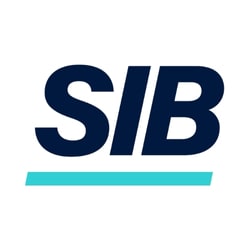Not two months into his job as CFO of Citrix, Arlen Shenkman is speeding the software company's transition from a perpetual- to a subscription-based licensing model, a move that will likely lead to more headwind against the company's profit and loss (P&L) statement until sometime in 2020.
Citrix, which specializes in remote-access workspace platforms, has been facing stiff competition as some of the biggest names in technology — Microsoft, Google and Amazon, among others — move into the workspace-platform sphere.
The company last week reported third-quarter revenue of $733 million, exceeding its guidance of $700 million to $720 million. But that figure represents a flat performance year over year, which Citrix called a "700-800 basis point headwind" in its most recent earnings statement.
That could change next year, once a bigger share of its revenue comes from subscriptions, David Henshall, the company's president and CEO, said in a letter released Thursday. "Accelerating the subscription transition gives us confidence that we will reach an inflection point in the financial model during fiscal year 2020, allowing revenue and free cash flow to reaccelerate," he said.
In its third-quarter results, 59% of Citrix's total bookings came in the form of subscriptions, up from 42% in the prior year's same quarter.
Long-term gains expected
Many companies have been making the transition from a perpetual- to a subscription-based licensing model because it can lead to steadier income, improved visibility into future income, and solve end-of-year accounting headaches.
Among companies that have converted some of their offerings into subscriptions are Philips, Caterpillar and Schneider Electric, according to Zuora, a SaaS subscription billing service provider.
"The subscription economy is not limited to one or two industries," said Carl Gold, chief data scientist at Zuora. "We're now seeing sectors far and wide placing subscriptions, over pure-play products, at the center of their businesses to achieve rapid and sustained long-term growth."
Companies like the model because it replaces a one-and-done purchase with a recurring revenue stream by having customers renew their license to use the software annually. But the transition is tricky, because the company is faced with the potential for declining revenue over the short term, since it generates only the one-year subscription amount rather than the full purchase price when it brings on a new customer.
Making the switch
The switch was a big success for 1E, a U.K.-based software provider that offers companies a platform for managing their internal IT requests.
That company made the switch two years ago to make end-of-year reporting easier and attract investors by smoothing its revenue. But getting through the transition was anything but assured, said William Edmondson, 1E's CFO.
"When you make this transition, there's always a working capital crunch," he said.
Shenkman, who came to Citrix after a long career at SAP, was tapped in large part because of his experience with subscription pricing. He said the company plans to stop issuing new perpetual licenses for its workspace product by 2020.
To get to that point, though, the company will have to watch its costs until its subscription revenue catches up with its lost new-customer income.
"Our role is to drive financial discipline through the organization during the transition," said Shenkman, who intends to explore external growth options for Citrix, potentially through partnerships or alliances, according to The Wall Street Journal.











